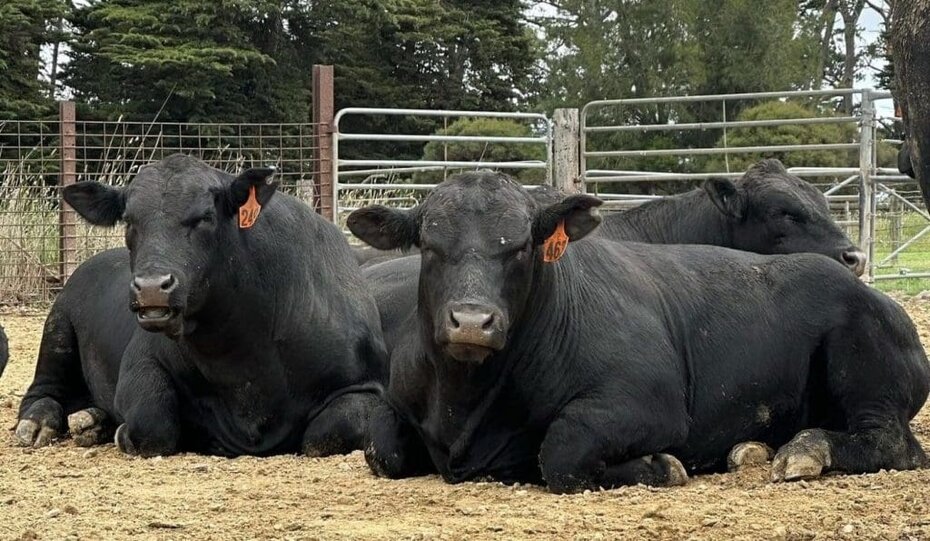Before we discuss bulls; who uses airlines to travel to distant locations of interest and to get us there promptly, and with less time spent than driving long distances? Well, the next question. Who relies on the pilots to fly the plane with all the navigational aids, instruments, measurements or do we check to see if they will only fly at sufficiently low enough altitude to see all the ground topography and terrain to get to our destination? Do we trust their calculations of aircraft weight, passenger numbers and air speed for height of travel and the litres of fuel loaded prior to departure?
Well, why do we place utmost confidence in objective measurements and calculations in that aspect of our daily life and business; yet overlook so much valuable objective information when it comes to buying bulls? Bulls are a major investment for commercial breeding businesses. As with any investment, it is important to get value for money, but the return on investment can be difficult to quantify.
There are two things of substance you get out of a bull whilst you own him; his semen which passes his genetics onto his progeny, and his excrement, better known as bullshit. How much of your purchase price is realised through these two substances will have a big impact on whether you get a positive return on your investment.
Where a bull has been fed to the eyeballs prior to sale to make him big and fat and shiny on sale day, most of that shine has to be excreted as bullshit before he is fit to work. In the meantime, the extra feed he has been given can also cause problems in his feet and joints and potentially fat in the neck of the scrotum adversely affecting testicular temperature regulation and spermatogenesis. Structural deterioration can be a function of the additional weight he has been carrying around precipitating early bull breakdown.
Some studs will tell you they feed them so they can ‘realise their genetic potential’, which only adds to the pile. The reality is that they are fed because the fed bulls usually sell better, and work ready ones are overlooked by most buyers who have trouble discerning between genotype (genetic composition) and phenotype (observable traits). It is a phenomenon to witness, how the grandeur of a big shiny animals can mesmerise buyers and outweigh any objective data on sale day! It could be argued therefore that it is demand driven, and the studs are giving buyers what they want. Although there are a number of courageous ones who buck the trend and trust enough in their genetics to present bulls prepared in the paddock without grain.
The whole exercise of feeding him up and then having to bring him back to working condition has absolutely no influence on the genetics he passes on to his progeny, which is where the value of the bull should ultimately be realised.
The cost is ultimately borne by commercial bull buyers though, who pay for it twice! They pay extra for the fed bulls because they look better, which allows the stud to recoup their feed costs. They pay for it again in resulting bull breakdown and through the time taken for them to lose their shine and get into work ready condition. In many cases, reduced bull fertility is a direct result of fatty deposits in fed bulls restricting normal testicular function in the short and sometimes longer term.
If thousands of dollars are spent per bull and thousands are fed up each year, then it costs the industry millions, if not tens of millions, of dollars each year. I’m not sure the post-sale photo in the paper is enough to recoup this cost.
An animal’s genetic potential can, and is, effectively measured without jamming a heap of feed down their throat. Those seedstock producers who are disciplined in measuring the phenotypic traits of their animals throughout their life and submit this information into BREEDPLAN along with genetic SNP profiles for the single step Genetic Breeding Value have a much better idea of their herds genetic profile and direction than those who do not.
Understanding the genotype of the animals available for purchase, and selecting those which will improve the profitability of your herd is the challenge, and opportunity, for bull buyers. There is an increasing number of astute buyers who, whilst ensuring their bulls are structurally sound and able to effectively pass on their genetics, focus primarily on the objective information on the genetics they will pass on and ultimately define the business profitability. They have recognised that understanding the BREEDPLAN data is a necessary skill for their profession and invested the time and effort to understand and be able to apply the BREEDPLAN data.
The Top Studs publication has been prepared as resource for those commercial bull buyers who want to ensure their seesdstock source is providing genetics which will improve their herd and business. It identifies 237 studs from across Australia that have breed leading genetics, as determined by the BREEDPLAN selection indices. It also simplifies the BREEDPLAN data and presents it in an easy-to-understand way for commercial bull buyers.
The bull source you select, and the bulls you buy from that source, will determine whether your bull investment returns genetic gain or bullshit. A small investment in the Top Studs publication will greatly assist this selection process; it will give you the confidence to look past the fat shiny bulls and identify genetics that will lift your bottom line.




